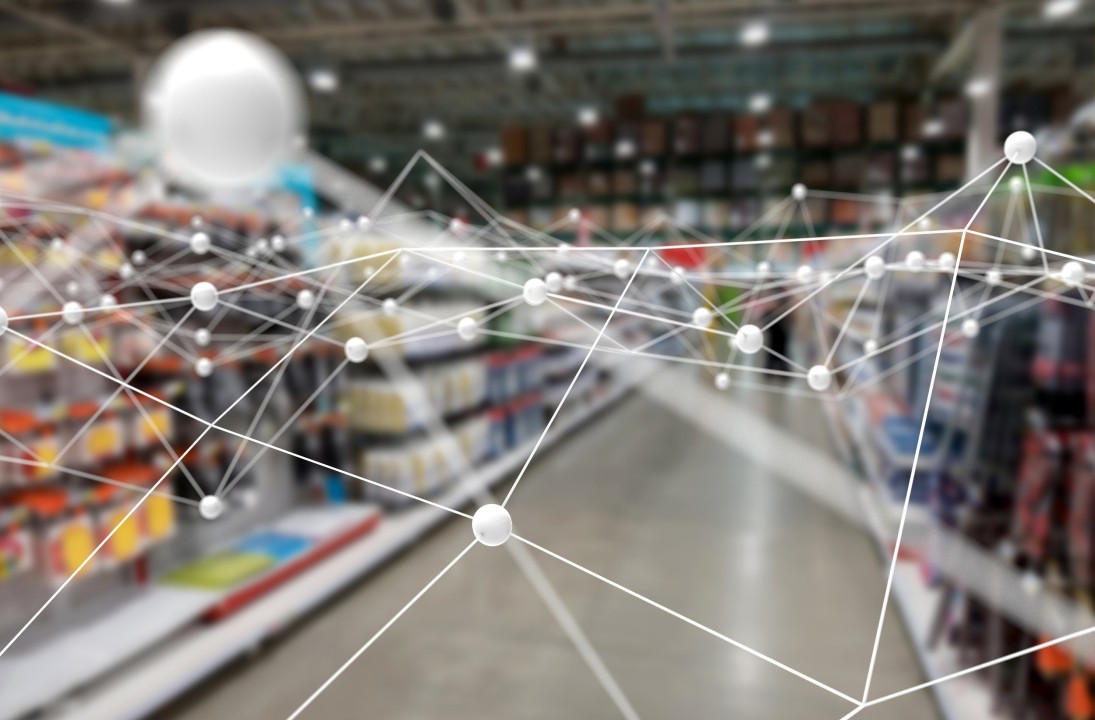|
Getting your Trinity Audio player ready...
|
By Bernard Marr
Retail is at a turning point where we are seeing businesses that are in-line with the pace of technological progress thriving, while those that are struggling to keep up are dropping by the wayside.
The global pandemic we are currently living through has only served to accelerate this process. Just as in other industries, a business’s level of technological maturity – particularly when it comes to truly transformative developments such as artificial intelligence (AI) and the internet of things (IoT) -is increasingly in direct correlation with growth and success.
Pre-pandemic, the focus of the discussion was firmly on the importance to bricks ‘n’ mortar retailers offering their customers the same advances in convenience and accessibility that they are used to when they shop online. This is still a priority, but other use cases have emerged, such as improving safety by monitoring social distancing. As in other industries during the pandemic, one catalyst for the acceleration in adoption has been necessity, but often this has led to innovation in other areas. Once you have computer vision systems in place for one reason – for example social distancing – other uses become apparent, and infrastructure can be repurposed.
For example – loss prevention. Deploying computer vision systems to detect and deter theft and other “shrinkage” is a key use case right now where many retailers are seeing impressive ROI. This shrinkage often accounts for 2% of annual sale volumes – a huge sum for companies such as Walmart or Tesco, which measure their sales revenue in hundreds of billions of dollars. AI systems can help to address this by using computer vision to monitor activity – both detecting thefts as they happen in real-time and predicting where they are likely to occur.
During a recent conversation, Siobhan Lynch, Dell’s Technologies EMEA lead for retail technology, told me that in her experience, this reduces theft at point-of-sale by up to 50%, with ROI typically meaning the technology requirements are repaid in six to twelve months.
This has huge knock-on benefits, and is a great driver of further AI pilots that often go on to create even more value. Siobhan Lynch says, “It paves the way to put this modern infrastructure within your stores … then you can run the ‘nice-to-haves’ – store analytics, wayfinding, demographics, queue prevention – all these initiatives where it’s harder to define the business case and the ROI, but you already have the infrastructure, and it’s paying for itself.”
Also joining us for the conversation was Azita Martin, GM for AI retail solutions at NVIDIA. I took the opportunity to ask her about the most significant use cases for machine learning and deep learning in retail today. Broadly speaking, she tells me they can be broken down into three core groups.
The first is forecasting. Things have moved on a long way since Target famously used advanced analytics and big data to predict which of their customers were pregnant before they started buying baby products. Today, these prediction algorithms are built on machine learning – software that is able to adjust itself to become more accurate as it “learns” by making decisions and monitoring its own performance. Large retailers now use it to track product demand and match it with inventory and supply chain management, ensuring products are in the place where customers want to buy them, at the right time. Over the past decade, retailers have advanced from a situation where it was normal for predictions to be based on a two-week window to the point where it can now be forecast accurately on a day-to-day basis. This elimination of inefficiency creates value all along a supply chain for the retailer and all of its partners that are involved with manufacturing and distribution. The shrinkage-reducing methods mentioned above would fit this category.
The second big area for AI implementation has been in intelligent warehousing. Today, unlike ten years ago, many warehouses and distribution centers are highly automated. Autonomous robots are used to move pallets of goods, or pick purchases for individual customers. Across the globe, this shift has lead to an overall increase of 30% in the throughput of distribution centers, Azita tells me. Much of this has been achieved by the elimination of human error – humans working long hours in uninspiring settings such as warehouses often become tired or bored, which leads to incorrectly fulfilled orders and wastage. The widespread adoption of AI has also enabled the emergence of “micro-fulfillment centers” – where businesses are able to repurpose areas within stores or at nearby locations in order to more efficiently distribute their stock to where it is needed.
Thirdly, there’s “last mile” delivery – the connection between the element of a distribution network that is closest to the customer’s home, and the customer themselves. Traditionally, this has accounted for around 80% of a product’s total delivery cost. Advanced use cases for this include delivery robots and drones that are quickly becoming a reality in many parts of the world. The majority of efficiencies, however, have so far been realized by more down-to-earth strategies such as intelligent routing of manned delivery vehicles. Azita Martin tells me “When a driver calls in sick in the morning and can’t make their deliveries … we’re able to redo the routing now in 12 minutes, whereas before it would have taken 12 hours. The impact is savings of around $120 million a year for the typical retailer, through gas savings and the ability to deliver items in a much shorter window.”
As the benefits of AI initiatives continue to become apparent, we can expect more categories of use cases to emerge. In particular, I am excited about the potential for extended reality (XR) – which includes virtual and augmented reality (VR and AR) to enhance the customer experience. Headsets that project computer-generated imagery over the wearer’s view of the real world, as well as those that place them inside entirely virtual environments, have the potential to further reduce the gap between the online and offline shopping experiences.
And many people see an eventual end-point for digital transformation in retail to be the vision of the “cashier-less” store, as popularized by Amazon with its Amazon Go stores. These use computer vision to track customers as they shop and automatically bill them through mobile payment systems as they leave. Piloted just a few years ago by Amazon in small convenience store-type outlets, the idea is quickly gaining in popularity, to the point that the first cashier-less supermarket may not be far away. Siobhan Lynch tells me that the amount of money spent in this type of store is projected to grow from around $253 million in 2018 to $45 billion in 2023. She says, “The more I look at it, the more I realize just how quickly this is becoming mainstream. The buzz around Amazon’s Go stores just can’t be ignored, and a lot of big retailers are looking into concept stores with frictionless capabilities.”
In reality, particularly in larger stores, there may always be a requirement for some human staff to be on hand to deal with problems that may arise, and I suspect anyone who has ever used a supermarket self-service cashier is likely to agree with me here! However, it’s clear that as far as retail goes, the future is – for the most part – automated, and AI is already playing a big part in making this possible.
For more on the topic of artificial intelligence, have a look at my book ‘The Intelligence Revolution: Transforming Your Business With AI’.
About Bernard Marr
Bernard Marr is a world-renowned futurist, influencer and thought leader in the field of business and technology. He is the author of 18 best-selling books, writes a regular column for Forbes and advises and coaches many of the world’s best-known organisations. He has over 2 million social media followers and was ranked by LinkedIn as one of the top 5 business influencers in the world and the No 1 influencer in the UK.






